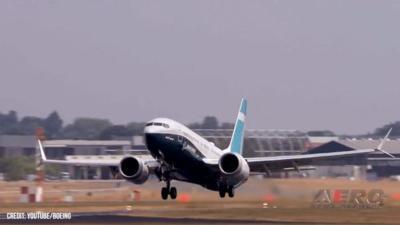Sun, Jan 14, 2024
All MAX 9 Aircraft in Time-Out Until FAA Sees 'Extensive and Rigorous' Fixes
The FAA announced a grounding for all Boeing 737 MAX-9 aircraft equipped with a certain plugged-exit layout in response to apparently unimpressive results throughout the operating fleet.

While the FAA had initially appeared as if it would let Boeing and its customers work things out between themselves, expanded inspections throughout the Max-9 fleet generated rumors that there were more loose bolts out there in the wild than expected. How true that is remains unknown, but rumors are as good as truth to the flying public - and Boeing's increasingly lackluster track record certainly doesn't buy them any credibility now. As such, the FAA won't let them fly until it approves an "extensive and rigorous inspection and maintenance process for returning 737 MAX-9 aircraft to service.
“We are working to make sure nothing like this happens again,” FAA Administrator Mike Whitaker said. “Our only concern is the safety of American travelers and the Boeing 737-9 MAX will not return to the skies until we are entirely satisfied it is safe.”
Some believed that Boeing's homework didn't impress the FAA much when it first turned them in. The agency initially said it would need "additional data" before approving the technique. In addition, the agency will require plug-door inspections of 40 aircraft. Apparently that was false, since the FAA did say it's "encouraged by the exhaustive nature of Boeing’s instructions for inspections and maintenance". The agency clarified that it wants to go through with the approval process once it reviews data from that batch of 40 aircraft once inspected.
"Upon a full review of the data the FAA will make a determination whether the instructions satisfy compliance with the highest standard of safety. If the FAA approves Boeing’s inspection and maintenance instructions, operators will be required to perform that regimen on every aircraft before it is returned to service."
Going along with that, the FAA "immediately increased its oversight of Boeing production and manufacturing" after the Alaska door mishap. It went a step further off the bat, too, launching an investigation to determine if Boeing failed to ensure completed products conformed to its approved design and were in a condition for safe operation in compliance with FAA regulations."
More News
From 2023 (YouTube Edition): "Ain’t Your Daddy’s Super Cub”—Don Wade Co-owned by Don and Ron Wade—the former of Don’s Dream Machines, a storied >[...]
Pilot-Rated Passenger Reported That The Pilot Did Not Adequately “Round Out” The Landing Flare And The Airplane Bounced And Yawed To The Right Analysis: The pilot state>[...]
Dead Reckoning Dead reckoning, as applied to flying, is the navigation of an airplane solely by means of computations based on airspeed, course, heading, wind direction, and speed,>[...]
Aero Linx: Lake Amphibian Club This website is created and sponsored by the Lake Amphibian Club, to help spread the word about these wonderful, versatile amphibians that can land j>[...]
“I am deeply honored to be sworn in as NASA administrator. NASA’s mission is as imperative and urgent as ever — to push the boundaries of human exploration, ignit>[...]
 Classic Aero-TV: In Praise of Alabamas Patriot Aircraft USA
Classic Aero-TV: In Praise of Alabamas Patriot Aircraft USA NTSB Final Report: Cirrus Design Corp SR22
NTSB Final Report: Cirrus Design Corp SR22 ANN's Daily Aero-Term (12.21.25): Dead Reckoning
ANN's Daily Aero-Term (12.21.25): Dead Reckoning ANN's Daily Aero-Linx (12.21.25)
ANN's Daily Aero-Linx (12.21.25) Aero-News: Quote of the Day (12.21.25)
Aero-News: Quote of the Day (12.21.25)



